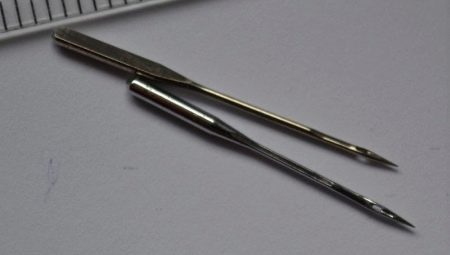Sewing needles are an important part of sewing and sewing embroidery machines and experience significant stress during operation. This obliges them to have high strength and excellent working qualities. Uninterrupted operation of the equipment and the quality of sewing depend on the technical characteristics of the needle, therefore, its selection must be approached very seriously and reasonably.

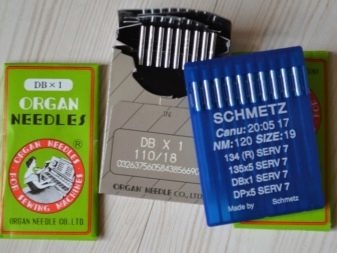
Description and structure
Needles for sewing equipment are available in a wide range and a wide variety of sizes and shapes. However, there are a number of features characteristic of all varieties of products, regardless of their narrow specialization.
The main elements of sewing needles that determine their purpose and performance are discussed below.
- Flask called the upper element of the rod, which is installed in the needle holder and is selected accordingly with its size. Bulbs are flat and round in shape. The first are intended for household samples, the second - for industrial units. Some rounded flasks have a recess designed to better fix the needle. It is on the flasks that the needle manufacturers apply the marking.
- Point located at the end of the needle and can be pointed and rounded. The first is designed to work with dense smooth fabrics and synthetics, the second - for coarse knit, lycra and thick denim. For materials of increased density, a point with a left-side groove is suitable, which prevents the thread from breaking when the needle passes through the fabric.
- Gutter (notch) is an important element of the needle and affects the quality of the loop.
- Kernel represents the “body” of the needle and determines the force of penetration of the tissue and the life of the needle.On one side it ends with a tip, on the other it goes into a flask.
- Needle eye located on the tip of the rod, it is small and large. The size of the hole depends on the thickness of the needle and affects the choice of thread.
The inner surface of the eye is quite smooth, not allowing tearing and weaving of the thread.
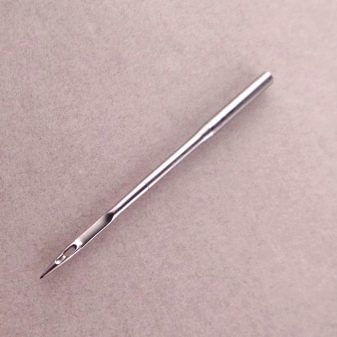
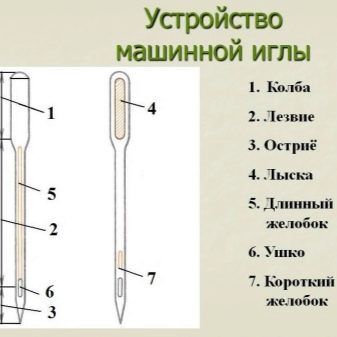
Varieties
Sewing equipment needles are classified according to their purpose and configuration. However, the second symptom is a direct consequence of the first, so the varieties of needles will be examined from the perspective of the first criterion. So, for each type of fabric, its own needle is intended, which differs from other models in the form of a cutting tip. On this indicator distinguish a pointed tool for textile materials and needles for leather products. The tip of the first has a rounded shape and enters the fabric, piercing it through.
Below are the main types of needles used for woven fabrics of the textile group.
- Finishing stitch tools consist of two or three rods, which allows you to form double and triple decorative seams that do not experience heavy load. Such needles are indispensable when embroidering patterns containing parallel elements.
True, they can be used by no means on all machines, but only on those that have the zigzag function and are equipped with a special slot in the needle plate.
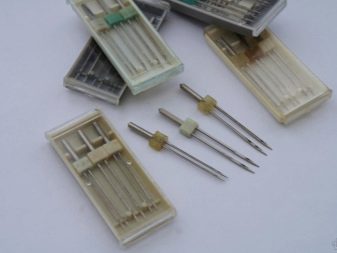
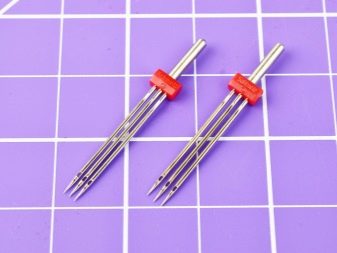
- Self-refueling needles were invented for people who have difficulty threading the eye. The core of such needles has a small slot located at the same level with the needle eye. It is enough for a seamstress to pass a thread through it, moving it along the rod towards the tip, after which it independently enters the eye.

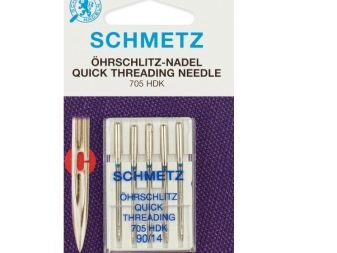
- Knitting needles have a spherical tip that can push apart the fibers of the fabric without piercing it. With the help of such needles, it becomes possible to form an even beautiful line that does not cause damage to the integrity of the canvas. This, in turn, eliminates the appearance of arrows extending in different directions from the seam.
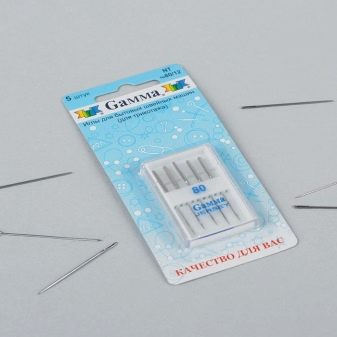
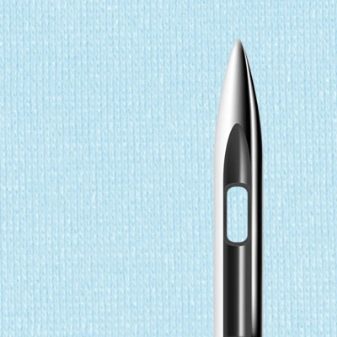
- Needles with wings are designed for making decorative holes along the main seam, which leads to the formation of openwork stitches and hemstitches. The wings spread the fibers and leave small neat holes.


- The needle point for sewing leather products is made in the form of a blade, not piercing, but cutting through the material. This design of the tip allows you to work with all types of skin, including rough skin, which has a fairly large thickness. Such needles practically do not break, do not skip stitches, do not break the thread and provide excellent sewing quality. The high strength of the material of manufacture and the well-thought-out shape of the tip allow the use of such models for a long time and with high sewing intensity.
A characteristic feature of the use of needles with a cutting tip is a seam with a slight slope of the stitches left or right.
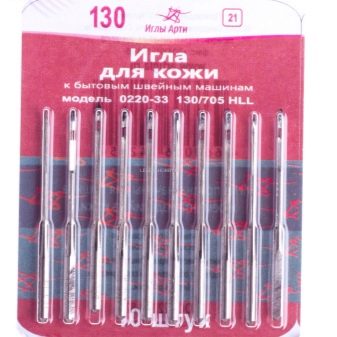
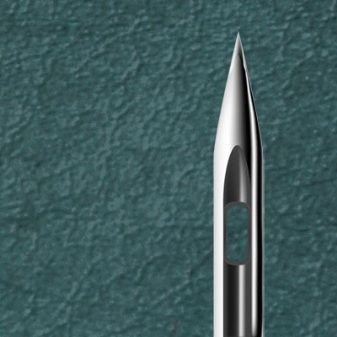
- Needles for jeans are made using titanium nitride spraying technology, which in its strength is significantly superior to many carbide metals. Thanks to this coating, “jeans” needles are characterized by high wear resistance and a long service life. The tip of such needles is very thin, slightly rounded at the end, which completely eliminates the risk of tissue damage and skipping of the stitch. It is very difficult to break such a needle, which is due to the modified shape of the rod. Previously, tools often broke when passing through the seams, causing just satisfaction among consumers.
After frequent complaints received by enterprises, manufacturers supplemented the rods with a cross-section of grooves. This gave them increased resistance to bending, 20-40% higher than that of standard needles.
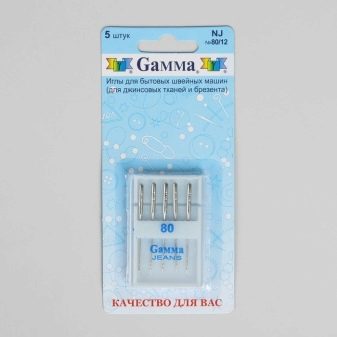
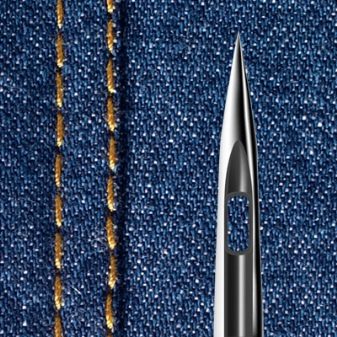
Letter designations
Sewing needles are present on the market in a huge assortment and differ among themselves by the parameters of the gutters, the shapes and sizes of the eyelet, the method of sharpening, the configuration of the point and specialization in one or another fabric. In order to make it easier for the consumer to navigate in a wide variety of models, marking is applied to each needle.
In addition to numbers, the marking of the needles also includes alphabetic values indicating which materials this or that model is intended for.
- H-ZWI mark it is put on the double models integrated by a uniform needle holder. Needles are available in three numbers - 70, 80 and 90 and have different distances between each other, which is also indicated in the marking and is indicated in millimeters. Usually it is from 1.6 to 6.0 mm, and models with a distance of 4 and 6 mm are intended only for straight stitching.
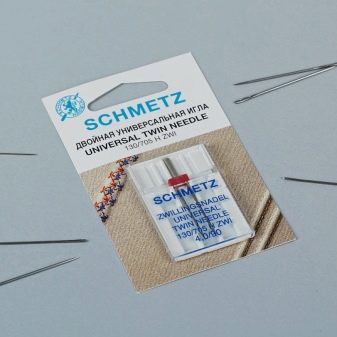
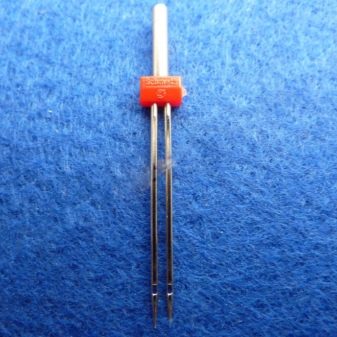
- Letter character H-DRI placed on triple needles, which are available in just two sizes - 2.5 and 3.0.
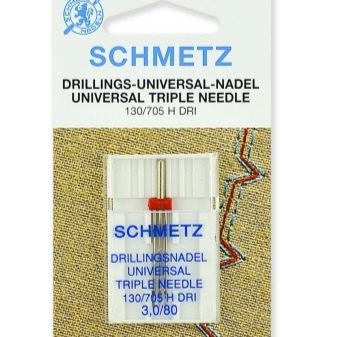
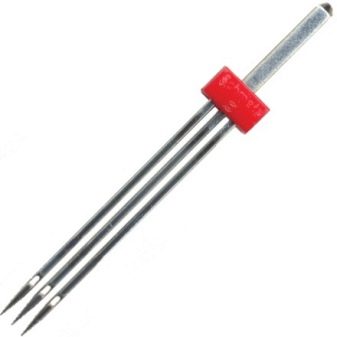
- Needles Topstitch Designed for sewing with loose decorative threads, have a wide eye and a special groove that facilitates the passage of naughty threads through the eye. Needles are equally well suited for both light and heavy fabrics, available in sizes 80-100.
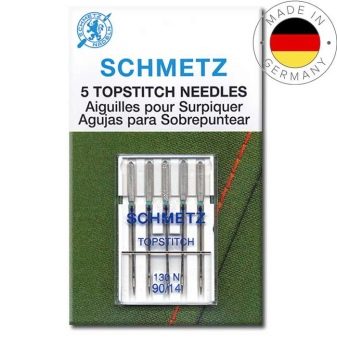
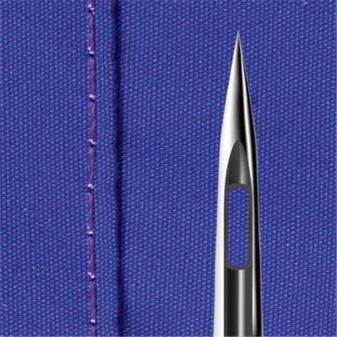
- Designation H-EM It is placed on models for embroidery with metallic threads. They are equipped with a large polished eye and a groove preventing thread separation.
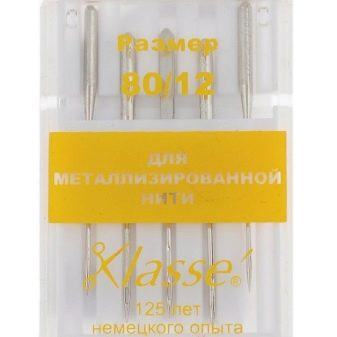
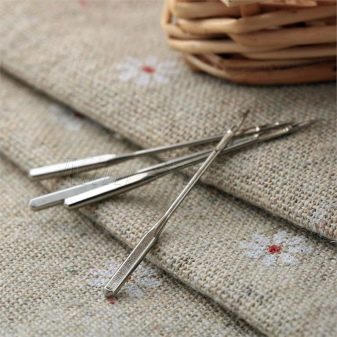
- H-SUK Symbol It is placed on models with a rounded tip. Such needles easily spread the threads of matter, slip between them and do not damage the fibers. They are optimally suited for sewing knitwear, knitted fabrics and jersey.
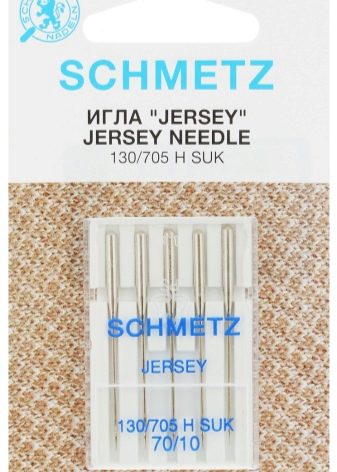
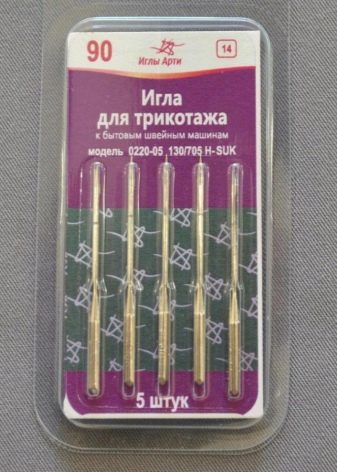
- Tools for sewing leather items are indicated by symbols H-LL and H-LR. They have a cutting tip and cut the skin at an angle of 45 degrees relative to the direction of the line. As a result, a beautiful neat seam with a slight slope of stitches.
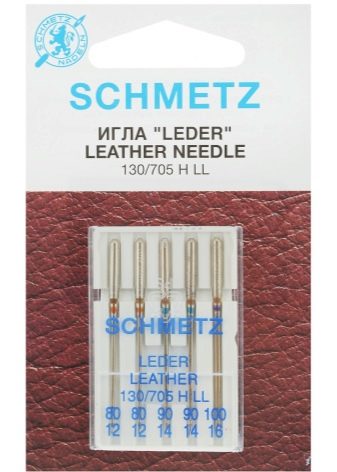
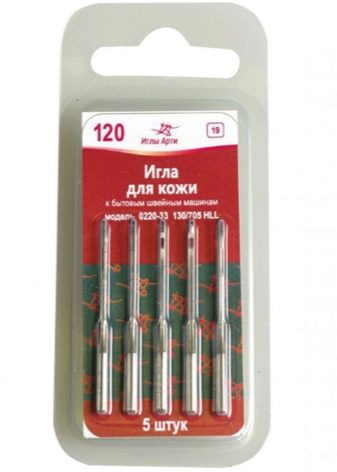
- Letters N-O needles with blades are indicated, they are designed for the execution of decorative stitches. Such models have different blade sizes, which can be located both on one side and on both.
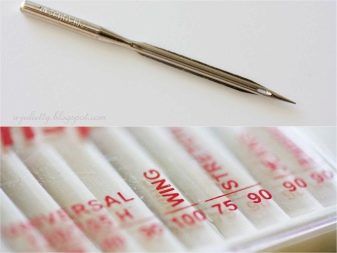
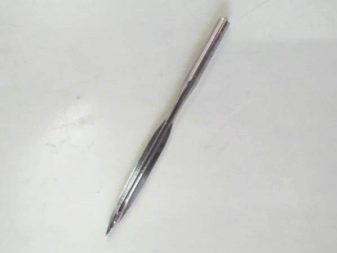
- Designation H-S affixed to models for elastic fabrics and not particularly dense knitwear. They are equipped with a special edge that prevents skipped stitches from stretching the fabric during sewing. The tip of such an instrument has a rounded shape, due to which it neatly pushes the fibers of the material without disturbing its structure.

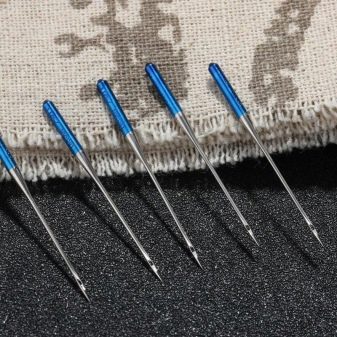
- Symbol H-J marked with a sharp instrument designed to work with thick fabrics such as jeans, twill and tarpaulin.
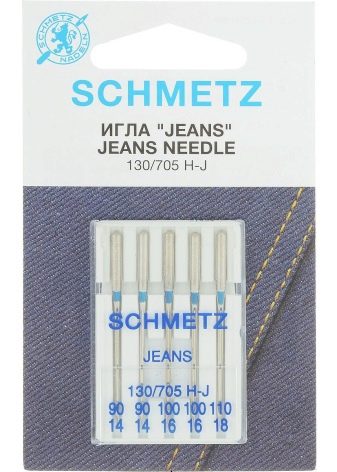
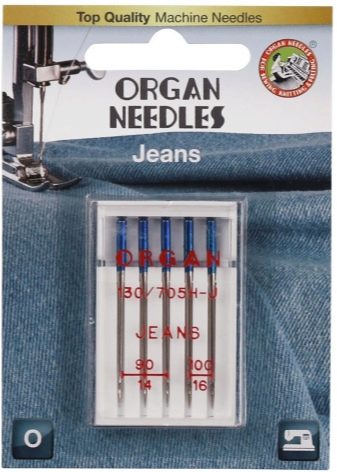
- Designation NM placed on microtex needles designed to work with microfibre and rather thin material of high density, such as silk, taffeta and raincoat fabric. Such needles are distinguished by a very thin and sharp stem, which allows for precise and fairly accurate punctures without pulling together the fabric adjacent to the piercing site.
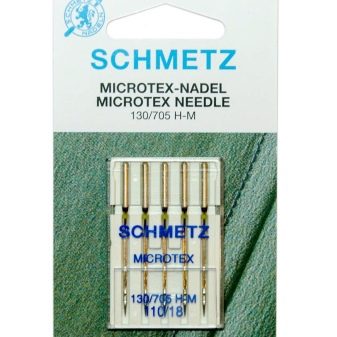
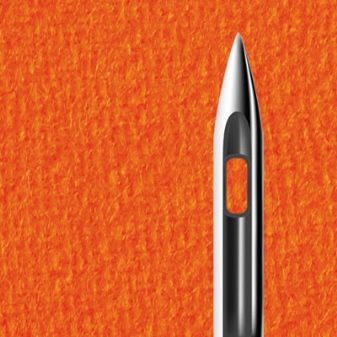
- Letters H-Q quilting needles having a bevel, a small eye and a point of a rounded type are indicated. This design allows you to protect the material from the appearance of large holes, excluding skipped stitches. The tool has a narrow specialization and is used to form decorative stitches.
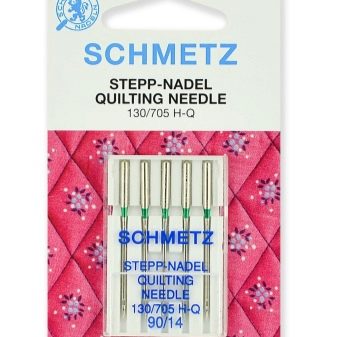
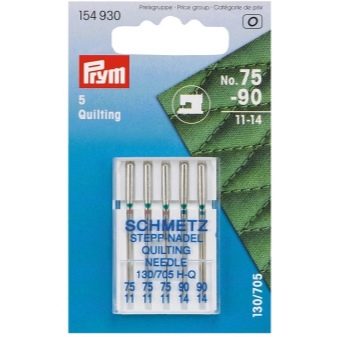
- Symbol N.E. embroidery needles with a small eye and a slightly rounded point are indicated. Moreover, they are equipped with a special recess that prevents damage to the material and threads. Such a tool is designed for specialized embroidery threads, such needles are not suitable for working with ordinary sewing threads.
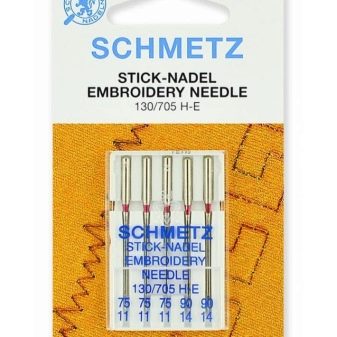
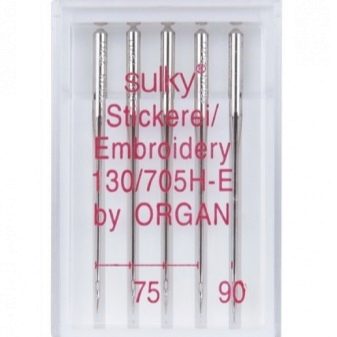
- Symbol H universal instruments with a slightly rounded point and intended for obedient fabrics such as cotton, calico and linen are designated.

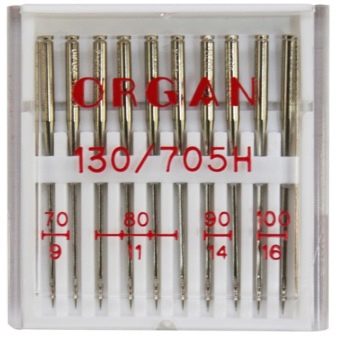
For greater clarity, the table below describes in detail what types and sizes of the tool are suitable for a particular matter.
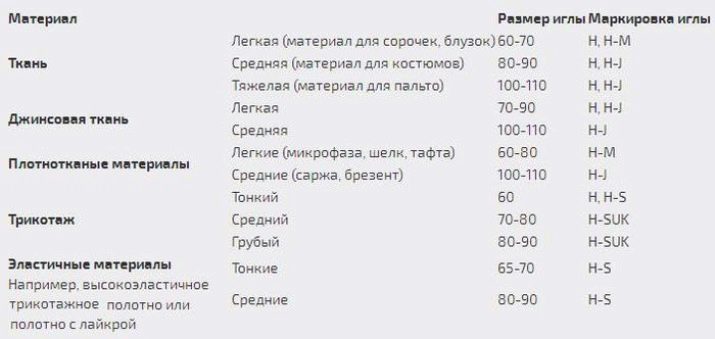
Digital marking
Numeric characters are usually put on the flasks and may look, for example, like this: 80/12. The first number indicates the diameter of the needle according to the European measurement system and is indicated in 1/100 of a millimeter. After simple calculations, you can see that the diameter of this needle is 0.8 mm. The second number also means the diameter of the tool, only already in the American metric system, indicating fractions of an inch.
The lower the numbers, the finer the instrument. For household sewing machines, models with numbering 60 / 8-120 / 19 are more often used, while the marking of the thickest instance is 200/25, and the thinnest one is 50/5. It should be noted that not all manufacturers indicate the diameter of the needle in two metric systems and often you can see a tool that only has a European designation, for example, No. 60 or No. 120 (which means 0.6 mm and 1.2 mm, respectively).
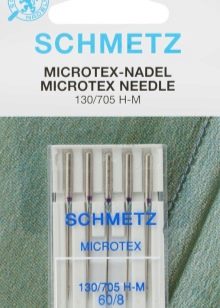
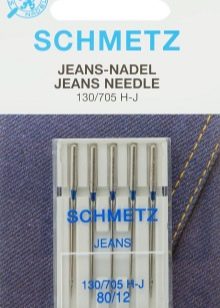

The choice of the right size depends on the fabric with which to work:
- for superheavy canvases, such as canvas and tarpaulin, they take needles with a number from 100 to 200, taking into account not only the thickness but also the density of the material;
- for cloth, beaver and burlap, needle No. 120 is suitable;
- heavy woolen fabrics are best sewn with needles at number 110;
- when sewing light wool, heavy synthetics and jeans, it is better to take a needle number 100;
- clothes made of such materials as calico, crepe de chine, cambric and costume cloth are sewn with needles numbered 80-90;
- fabric for shirts and blouses should be sewn with tool No. 60-70;
- for fabrics with lycra or fine knitwear it is recommended to use needles No. 65-90.
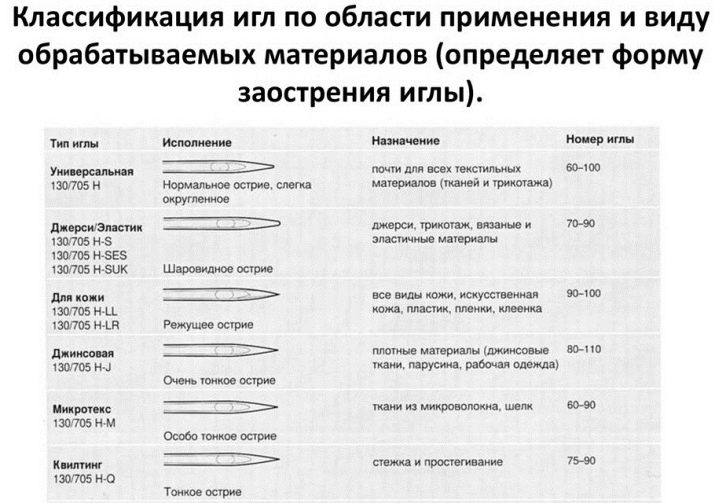
How to choose?
In order to correctly choose a tool for a sewing machine, A number of important points must be taken into account.
- If models are bought for a household samplethen instances with a flat bulb should be selected. They are easily installed in the holders and sit very well in them. There are also specimens with a flat - cut of the bulb, facilitating the correct installation of the needle when replacing it. An incorrectly selected flask can lead to serious malfunctions arising from the improper working position of the eye of the needle and the tip relative to the shuttle.
- The most common tool for household machines are Organ 130 / 705H models. They have a slightly rounded point, are available in different sizes, are suitable for most fabrics and are considered universal.
- Experienced craftsmen recommend buying needles not in one copy, but immediately in sets. This eliminates the need to go to the store when sewing problematic materials, since most sets include needles for sewing all types of fabric.
- An important criterion for choosing a tool for sewing is the characteristic of the fabric. In order to choose the right model, you should be guided by the table, not relying on the opinions of other people.
- If tools are purchased for an industrial-grade unit, round-bulb models should be selected. In this case, special attention must be paid to the manufacturer. The best and most durable is the products of the German companies Grotz-Beckert, Schmetz and Organ Needles, which have been on the market for a long time and value their reputation.
- You should also consider the type of sewing machine, carefully reading the instructions for its operation. Typically, manufacturers tell in detail which needle numbers to use for sewing different materials, give an example of their marking.
- Instruments may rust during prolonged or improper storage. The use of such instances is strictly prohibited, as they can ruin the material and break the thread.
- When buying needles, they must be carefully inspected. - if there is a distortion of at least one of them, the purchase of the kit should be abandoned. Under no circumstances will it be possible to level it, and it is easy to spoil the fabric and damage the machine.
And also you should check the models for marriage - poor sharpening and the incorrect location of the grooves in relation to the eye.
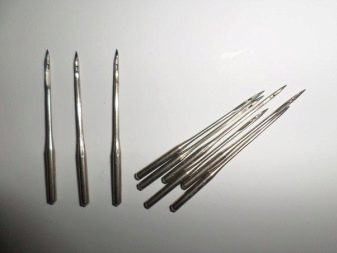
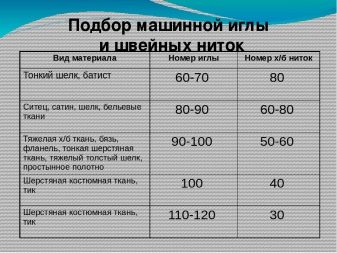
Experienced craftsmen and most manufacturers of sewing equipment recommend replacing needles after every 12 hours of continuous use. If this is not done on time, then the needle begins to tear the thread and spoil the material, which in the end will cost much more than its timely replacement.


See how to choose sewing machine needles in the next video.
